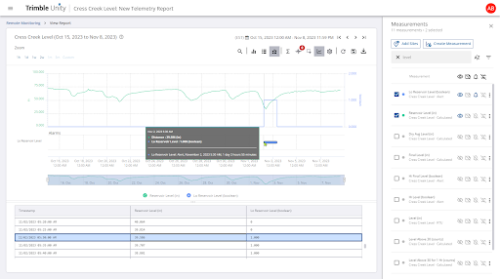Alert measurements expand on our calculation capabilities, enabling users to merge RTU and imported data for notifying team members about intricate conditions that go beyond the capabilities of RTU alarms on their own. For instance, you can identify a rising level without concurrent precipitation or pressure drops affecting multiple monitoring sites. To further enhance this system, incorporate dwell counts to curtail false alarms and reduce redundant notifications. Define new types to classify your alerts, which are reported and grouped on the system health dashboard.

Set up associations to simplify data sharing between monitoring sites, incorporating these measurements into a site's default telemetry report. For example, you can share a single rain measurement with multiple flow monitoring sites in the same geographic area. Associations streamline the process of building reports that contain related data from various monitoring sites.

Optimize response procedures by employing permission policies and hiding specific alarm and alert types from users who do not require access, facilitating a more organized approach to handling alarms. Previously, RM users could define permission policies that controlled monitoring site and measurement visibility for various user groups. Permission policies have been extended to filter the monitoring site's alarm status and history, ensuring users have a consistent view of their remote monitoring system.

-
Eliminate clutter by deleting your retired RTUs
-
See a snapshot of current conditions with the last value measurement property
-
Interpret event states more easily
Talk to an expert to learn more about remote monitoring and work management solutions on Trimble Unity
